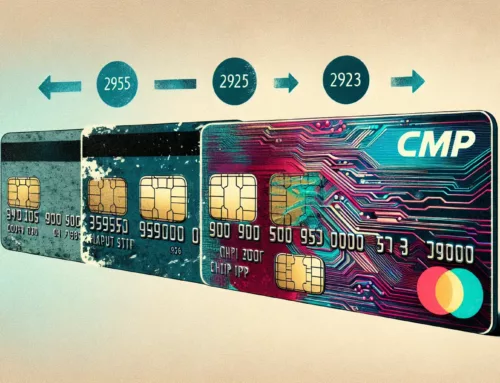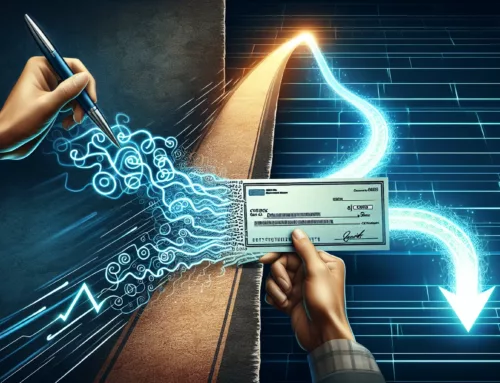BLOGS
Advantages of Accepting ACH Payments Online

While businesses once functioned from cashing consumer checks alone, online shifts have increasingly required more complex, varied payment solutions to suit a wide range of consumer needs. Certainly, companies are now expected to offer online card payments as standard, with many even simplifying this using one-click options like card tap functionality.
Perhaps unsurprisingly, however, online markets that have evolved almost beyond recognition in recent years (eCommerce markets have jumped by as much as $26.7 trillion since 2020), also require a unique and cutting-edge approach to new online payments and processing options that further appeal to the widest audiences.
Unfortunately, a general leaning towards card payments as the so-called easiest option means that countless companies have failed to consider alternatives like automated clearing house (ACH) payments, and even if they don’t realize it, many are paying for that mistake. As online markets continue to grow, especially, the benefits of ACH are well worth paying attention to, and we’re going to prove that point by considering what they entail in this article.
What are ACH payments?
Short for automated clearing house payments, ACH payments are a method for directly transferring money from one account to another without the need for cash, credit card, or anything else. In other words, online check acceptance. Service providers can especially benefit from the use of easily recurring ACH payments when it comes to the collection of monthly bills, but as the popularity of this payment method increases, other uses are also making themselves known, including both recurring subscription payments, etc., and one-off purchases that have previously relied on card processing.
Unlike electronic funds transfer payments (EFTs) which are processed in real-time at a generally high cost to the company and consumer in question, ACH payments are processed in batches and are a far lower-cost option that allows the transfer of funds both ways. This processing happens across the automated house clearing network, which connects all US banks, but also relies on the input of outside sources including –
- The original depository financial institution (ODFI): The banking institution that initiates the transaction (e.g. your bank or ACH provider).
- The receiving depository financial institution (RDFI): The banking institution that receives the ACH request (e.g. your customer’s account).
- The National Automated Clearing House Association: A governmental entity that oversees all ACH transactions
Once a company is ready to offer ACH payments online, this will typically be achieved through a four-step process that includes –
- Customer authorization: A consumer authorizes the transfer of payment from their bank account (RDFI) to the company account in question (ODFI).
- Transaction initiation: A business sends transaction details to its ODFI.
- Payment request: The ODFI’s request is routed to the RDFI.
- Payment processing: The RDFI checks for sufficient funds and processes the payment.
Because the NACHA processes ACH payments in batches, this process can take as long as several working days to complete. However, NACHA rules stipulating that the ACH must process credits three times a day instead of just once are a step towards same-day ACH payments that will undeniably continue to increase in popularity.
What are the advantages of accepting ACH payments online?
Generally speaking, expanding payment options across competitive online landscapes is a great way to boost customer acquisition and ensure that you’re appealing to the largest possible audiences. This is true of varied and accessible card payment options and ACH offerings alike. However, there are some very specific benefits of incorporating ACH into your online payment processing plans, and we’re going to consider the most pressing of them here.

1. Lower processing costs
Considering that cost-saving is always a pressing reason to make business decisions, it’s essential to note that ACH transaction fees are considerably lower than general card processing costs, with a typical ACH transaction costing as little as $0.20-$1.50 per transaction depending on the sale amount. The elimination of typically two-fold card processing fees that require both processing and percentage payments can especially help to make this a more affordable option both for companies in general and, more pressingly, for their consumers. This is a benefit that can be enjoyed even across one-time payments that are automatically more competitive than rivals who don’t yet offer ACH, but for service providers or B2B companies who operate ongoing payment plans, the ability to significantly cut costs over entire terms of service are guaranteed to see higher rates of interest as a result of introducing ACH processing as a viable payment option.
2. Increased convenience
While all online payments are more convenient for consumers and companies than in-person cash or check payments, ACH payment options take that benefit one step further by allowing automatic, direct payments from one account to another, without requiring half as much input on either end. Admittedly, consumers will need to seek their bank details to pay this way, but the ability to set predetermined payment dates for ongoing transactions still makes this an easier option in general. Even for one-time transactions, the ability to ensure direct money transfers without the need for a middle party can provide untold convenience in both cases by eliminating the need for things like paper invoices, trips to the bank, or regular visits to the post office.
3. Faster processing times
Hands-free ACH payments that remove the need to visit the bank or wait for paper processing have always been quicker than the processing of things like paper cheques. Of course, with turnovers of between 2-5 days depending on your bank, it is true to say that ACH payments currently take a little longer to process than card payments, but even this is set to change as NACHA rules continue to embrace ease and speed with generally faster same-day collections already in place for ACH credits. The ease of recurring payments through this method can also result in faster processing by removing the need for ongoing consumer input in place of automated payments that always arrive at the right time.
4. Secure solutions
Despite not following the same PCI compliance guidelines as credit card processing, NACHA outlines that all parties involved in ACH transactions must implement secure processes, procedures, and controls to keep transactions as safe as possible. A requirement for the use of encrypted data across these transactions adds a further layer of security, meaning that ACH payments can’t be made via unencrypted routes like email or insecure web forms that leave information open to breaches. Originators of ACH payments must also take steps to ensure the validity of their customers and to identify possible fraudulent activity across ACH processing practices, thus better ensuring that ACH payments are a secure and reliable process for everyone involved. Plus, it helps reduce the chance of a chargeback, which has become a massive problem in the credit card processing space for business owners.
5. Improved cash flow
Most obviously, ACH payments improve company cash flow because they simplify the transfer of even recurring funds, and generally make it more likely that consumers will pay on time. Further to that, the fact that ACH payments can also be used for internal affairs including the payment of employees, suppliers, and taxes, means that cashflow here can move far more smoothly as a result of direct-to-bank ACH payments than if a company was having to move the money from card payments or similar to different accounts. As if that weren’t enough, ACH payments that allow both the sending and requesting of funds in a way that EFTs have always lacked ensure a free flow of cash both ways, without the need for human intervention to make that possible.

6. Funding customer accounts
In keeping with that last point, it’s also worth noting that, in cases of things like cryptocurrency, digital wallets, or just rewards, ACH also provides a fantastic, fast, and simple way to fund customer accounts where necessary. The freedom of online accounts that allow for accessible transfers according to your client’s needs in these instances especially enable higher retention rates, transfers with far less legwork, and a generally guaranteed sense of satisfaction that both enhances loyalty, and increases the chances of positive recommendations for your company overall.
7. Reduced churn
Credit cards that expire or get lost have a general shelf-life of around three years, meaning that client profiles attached to payments of this nature can result in missed payments or a simple failure to renew/update a service account. By comparison, studies show that bank accounts last as long as fourteen years or more, meaning that companies accepting direct ACH payments are far better able to stay connected and continue reliably renewing their services without the same risk of dropping off a consumer’s radar because their card was no longer linked and they didn’t realize.
Are ACH payments paving the way for online acceptance?
While they certainly shouldn’t replace the card options that provide the variety of choices modern consumers expect, increasingly accessible ACH payments and the benefits they provide are crucial to the future of online success. It’s only by realizing the full extent of these benefits, and by taking steps to choose the ideal ACH provider for their needs, services and priorities that service providers, B2B companies, and many others can continue competing in an age where variety will surely continue to be the spice of competition



